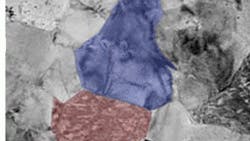New alloy suits MEMS devices
A multi-institution team of researchers, spearheaded by a group at the University of Maryland, is combining new materials research with an old metallurgy technique to produce an alloy that could be the basis for a new class of sensors and micromechanical devices controlled by magnetism. The alloy is a combination of cobalt and iron and needs no rare-earth elements to achieve its properties. Scientists at the National Institute of Standards and Technology (NIST) contributed precision measurements of the alloy's structure and mechanical properties to the project.
The alloy exhibits giant magnetostriction, an amplified change in dimensions when placed in a strong magnetic field. The effect is similar to the piezoelectric effect that causes certain materials, like quartz, to compress under an electric field. Devices based on these effects can be used in a variety of ways, such as tiny actuators for micromechanical machines. Unlike piezoelectrics, magnetostrictive elements don't need wires and can be controlled by an external magnetic field source.
To find the best mixture of metals and processing, the team fabricated hundreds of tiny test cantilevers and coated them with a thin film of alloy, varying the ratio of cobalt to iron across the array. Researchers also used two different heat treatments, including one in which the alloy was heated to an annealing temperature and then quenched in water. The best annealed alloy showed a magnetostriction effect in magnetic fields as low as about 0.01 Tesla. Results are comparable to the values for the best-known magnetostrictive material, a rare-earth alloy called Tb-Dy-Fe.
“Magnetorestriction devices are less developed than piezoelectrics, but they're becoming more interesting because the scale at which you can operate is smaller,” says NIST materials scientist Will Osborn. “Piezoelectrics are usually oxides, brittle and often lead-based, all of which is hard on manufacturing processes. These new alloys are metal and much more compatible with the current generation of integrated device manufacturing. They're a good next-generation material for microelectromechanical machines.”
